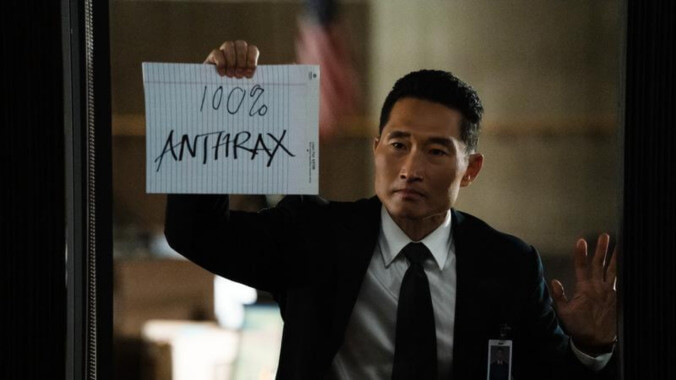Daniel Dae Kim and Tony Goldwyn are engaging in the otherwise formulaic Hot Zone: Anthrax
Season two of the Nat Geo drama anthology is a mechanical ripped-from-the-headlines story with two solid lead performances


After tackling the Ebola crisis in its first season, Nat Geo’s anthology drama The Hot Zone returns to reexamine the investigation behind 2001’s Anthrax mailings, which killed five people and infected several more. The six-parter offers a cut-and-dried look at the heinous crimes which took place in the weeks following 9/11. But the narrow approach is drawn out and dull, despite captivating performances from lead duo Daniel Dae Kim and Tony Goldwyn.
The Hot Zone: Anthrax makes an effort to touch on a monumental incident that usually gets overshadowed in 9/11 coverage, but it still doesn’t offer a lot of new information. This is a linear retelling of the case through the eyes of FBI agent Matthew Ryker (Kim), an amalgamation of the agents who actually investigated the letters. No time is spent fleshing out the lead character beyond his passion for finding the culprit. Dressed only in sharp suits and a perpetual furrowed brow, Kim can only do so much to save a relatively one-note script.
Matthew’s PTSD from witnessing the attack on the Pentagon is the only other facet explored here. But the CGI shot of him standing alone on the green grass—too close to the building—staring at the ruins is laughably bad. Kim is a terrific performer, but here he is saddled with revisiting Matthew’s trauma by simply holding his head in tough moments as the screen fades to shots of loose, rumbling change in his car. The whole subplot is tacked on for dramatic effect.
